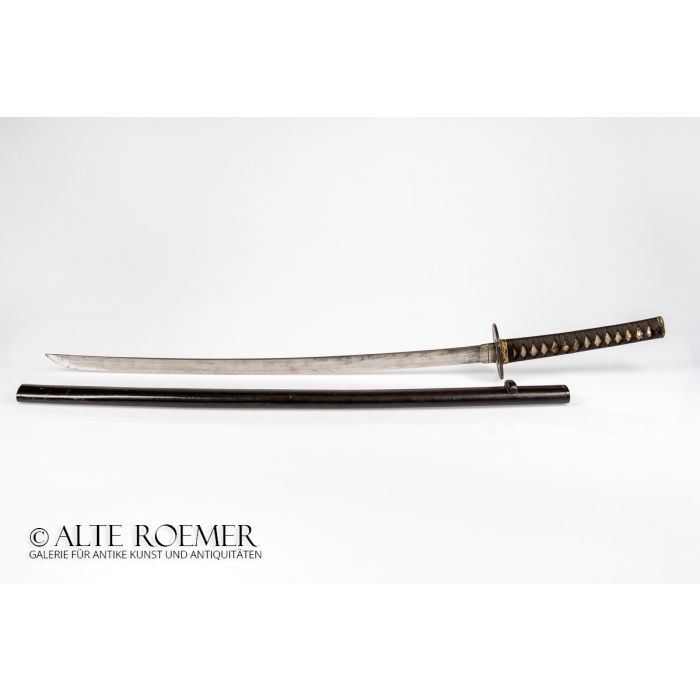Japanese Katana forged around 1430
Price: on request
Sold
Object number
AR2893
| Object: |
Japanese samurai sword (Katana)
|
| Material: |
Steel
|
| Date: |
Around 1430 Muromachi period |
| Description: |
Japanese long sword (daito), slightly curved blade with ridge (shinogi tsukuri) and long point (o-kissaki). The point of the deepest curvature appears at the center of the blade (torii zori). Gunome Midare Hamon (the hamon, literally "blade pattern", is a visual effect created on the blade by the tempering process and can be seen as a proof of the swordsmith's skills. Among the innumerable existing hamon types, the term "o-midare" which can be translated as "turbulent sea" is used to describe wavy lines, while "gunome" stands for regular or irregular zigzag). Hada and boshi (tempered lines on blade and point) slightly blurry. Mune hikushi (back ridge with low back). The hilt is attached to the tang (Nakago) with two bamboo pegs (Mekugi). Nakago with horizontal file marks (Kiri Yasurimei), signed "Tsugu Mitsu". Habaki (blade collar,) made of silvered copper, the Fuchi (band of metal that caps the top of the handle) and Kashira (butt cap or "pommel") which are made of shakudo show rain dragons and blossoms on Nanako ground. Tsuka (handle) with ray skin (Samegawa) and black silk, partially gilted shakudo Menuki shaped as kaki blossoms. Iron Tsuba (hand guard), it's shape being a combination of Mokkogata and Sumi iri kaku gata, decorated with blossom and tendril in gold and silver. |
| Size: |
Length 90 cm, thereof 65 cm blade
|
| Condition: |
Excellently preserved, with kizu and traces of use in antiquity.
|
| Provenance: |
Acquired 2015 in a traditional Munich auction house. Ex collection of a Munich lawyer, acquired in the 1970s.
|
| Literature: |
An excellent introduction to the art of Japanese samurai blades is given in: J. M. Yumoto, The Samurai Sword. A Handbook (Rutland 1988) |
| Authenticity: |
We unconditionally guarantee the authenticity of every artefact, all items are subject to our lifetime return policy on authenticity.
|


